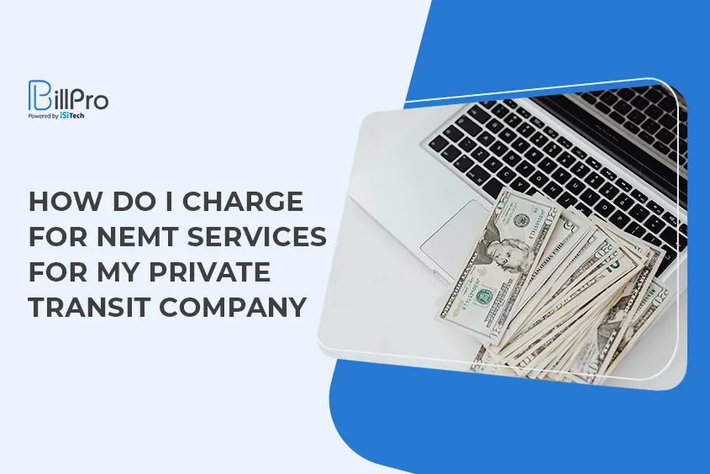Thousands of Americans miss their medical appointments due to the lack of appropriate transportation. The most vulnerable are senior citizens and persons with disabilities, who need special types of vehicles for safe and comfortable trips to clinics and other healthcare facilities.
What they need is non-emergency medical transportation (NEMT). These are companies that serve people with mobility issues. NEMT vehicles can transport those who need wheelchairs or stretchers and other equipment to go to their medical appointments.
This system is one way to improve access to healthcare all over the country.
For business owners who want to dip their toes in this industry, how do they determine NEMT pricing?
Understanding Pricing Models for NEMT Services
NEMT companies follow a different pricing scheme than public transportation. This is partly because NEMT services are covered under the government’s Medicaid program—they are becoming critical to navigating healthcare.
There are also different parameters involved in providing NEMT services, much like medical services that vary depending on the procedures that the patient needs.
Here are critical factors that affect NEMT pricing:
Fixed Costs
Fixed NEMT costs refer to the lease price or cost of vehicle acquisition, drivers and staff wages, software, real estate rentals, and other operational expenses that are essential in the smooth running of these companies. The price of each trip should be enough to cover these along with reasonable profit.
Variable Costs
These refer to expenses that are not fixed and, instead, are prone to increase as the company grows. These will include higher fuel costs as more vehicles are added to the fleet and the global market fluctuates. Maintenance and insurance costs will increase as well.
Average Market Price
Finding the sweet spot for NEMT pricing is crucial. You don’t want to set the fare too low that you won’t be able to sustain operations. Too high, and you will risk losing customers to your competition. Your NEMT prices must be based on the average fares around the country.
According to a study, the average ambulatory rate for a five-mile NEMT trip is $21.18, while a wheelchair trip averages $28.95.
Demand
NEMT businesses operate on a state level and are often managed by state officials. It is best to research the community and see if there is demand for NEMT providers.
If there is high demand for NEMT but only a few private transit companies provide such services, you can set a higher-than-average fare. But if competition is stiff, your rates must be more conservative.
Calculating Distance and Travel Time Changes
 Distance and travel time are never the same in NEMT. First, unlike a mass transport system, NEMT is a door-to-door model to provide the best possible service for patients with mobility issues. Passengers are always picked up at their homes and dropped off at their medical appointments. This means no two clients will cover the same distance during their trips.
Distance and travel time are never the same in NEMT. First, unlike a mass transport system, NEMT is a door-to-door model to provide the best possible service for patients with mobility issues. Passengers are always picked up at their homes and dropped off at their medical appointments. This means no two clients will cover the same distance during their trips.
Second, NEMT provides back-and-forth services. If needed, the driver will wait for the passenger to finish their appointment so they can be ferried back home. As such, trip durations differ significantly from one passenger to the next.
So, how does this affect NEMT pricing? Here are standard NEMT pricing models that companies collect for the services:
Pickup Fee
The moment a passenger boards the NEMT vehicle, there is a flat-rate charge. The pickup fee differs for every mode of transportation.
For example, traditional transport is cheaper than wheelchair transport. The vehicle used for the latter service is bigger and more expensive, as it needs a loading ramp.
Per-Mile Rate
Some NEMT companies charge a per-mile rate. However, this is not ideal because, as mentioned, distance is not the only factor that determines the overall cost of an NEMT trip.
A pickup fee with a standard mileage inclusion makes more sense, with a per-mile rate for longer trips (e.g., more than five or ten miles).
Weekend and Holiday Rates
While it is not a law, most US companies give holiday pay to employees. It is usually 150% of an employee’s regular wage as compensation for working on a day they could be resting or enjoying with family and friends.
NEMT companies can set higher rates for weekends and holidays to cover increased wages.
No-Show Fee
Companies must impose no-show fees to prevent patients from booking NEMT services without following through. No-shows waste the driver’s time, effort, and fuel—the passenger should be charged for a fraction of this cost.
Flat Rate
Some NEMT companies also impose a flat rate for every trip, regardless of distance or duration. It’s not very flexible, so it is not the best option for such services.
Additional Services and Special Requests
Patients with special mobility needs may require the following to go to their appointments:
-
Walker
-
Wheelchair
-
Stretcher
-
Oxygen
-
Other medical equipment
Any of these could be requested as additional services and charged as add-ons to standard fees.
Navigating Insurance and Medicaid Reimbursement
 Private pay or insurance reimbursement are the two main methods for payment. Many people who need NEMT services are from low-income households covered by Medicaid.
Private pay or insurance reimbursement are the two main methods for payment. Many people who need NEMT services are from low-income households covered by Medicaid.
How are Medicaid reimbursement rates determined? It is quite tricky, as Medicaid is quite strict with the requirements for reimbursement. For example, NEMT companies cannot charge the insurer no-show fees. More importantly, companies must provide the most cost-effective mode when transporting patients to their medical appointments and back home. This means companies charge lower rates to Medicaid beneficiaries.
How does Medicaid reimbursement work? Since NEMT is managed at a state level, the reimbursement rate and requirements are set by these authorities. Companies must provide documentation of their service to the Medicaid beneficiary.
Using Medicaid billing software like BillPro will simplify the process. It will also reduce the risk of billing errors that would lead to the rejection of claims. Claim denials would hurt healthcare companies financially.
NEMT clients with Medicaid may also have private insurance. In this case, how to charge insurance companies with Medicaid? In most cases, Medicaid is the last resort, and the other insurance provider must be charged first.
NEMT companies can also charge both insurance providers on a cost-sharing basis, but only up to what is allowed by Medicaid.
Conclusion
The NEMT industry has been a key player in ensuring all individuals have access to healthcare. But for these companies, charging fares is quite tricky.
Using billing software can simplify the process. NEMT companies can provide private payers with itemized billing for their satisfaction and increase their clean claim rate for Medicaid and private insurance reimbursements.

 2.9/5 (17 votes)
2.9/5 (17 votes)
 563 views
563 views



